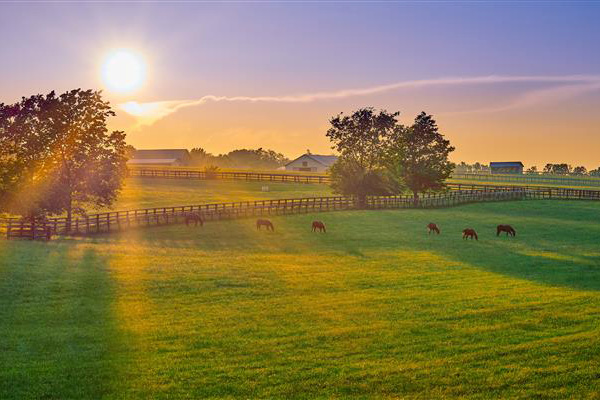[ad_1]

Right here in Central Kentucky, we’re hotter and wetter at this time than 50 years in the past, and these local weather developments are predicted to proceed.
How do these new local weather circumstances influence the forage base that helps our equine trade? That’s the query our lab posed again in 2008 and acquired a nationwide grant to look at. We established a manipulative, discipline experiment elevating temperatures and rainfall on a pasture which we planted in typical Central Kentucky pasture species: Kentucky bluegrass, tall fescue, crimson and white clover and more and more widespread bermudagrass. We used overhead infrared radiant heaters to extend the temperature of the plant cover by 3oC, day and evening, year-round for 5 consecutive years, and we added +30% of the long-term imply annual rainfall solely on moist days, throughout the rising season, to imitate bigger rainfall occasions on the plots slated for that therapy. We in contrast the consequences of elevated temperature alone, elevated rainfall alone and the mixture of each remedies to ambient circumstances.
We discovered that hotter circumstances considerably elevated total forage manufacturing (+19%), partly by stimulating cool-season grass progress earlier within the spring and later into the autumn. Nevertheless, increased temperatures in the summertime promoted the expansion of warm-season grasses (bermuda and crabgrass) on the expense of conventional cool-season forages (Kentucky bluegrass and tall fescue). Over the five-year interval, tall fescue abundance was dramatically lowered (from 40% to twenty%) within the warmed remedies in comparison with ambient controls. Importantly for grazing horses, the tall fescue that remained within the elevated temperature plots was extra prone to be endophyte-infected and had considerably increased concentrations of poisonous alkaloids reminiscent of ergovaline, the putative agent of fescue toxicosis. Endophyte-infected tall fescue crops experiencing warming had 30% increased concentrations of ergovaline than endophyte-infected materials grown underneath ambient circumstances, notably within the fall. The consequences of the elevated rainfall therapy had been much less pronounced than that of the temperature response.
Given the numerous animal well being points attributable to consumption of poisonous tall fescue, the noticed improve in alkaloid concentrations with warming is a trigger for concern. Nevertheless, the discount in tall fescue abundance and the rise in different non-toxic, warm-season forage species might imply that fescue toxicity is diluted for grazing animals. The kind of warm-season forage species that responds can be necessary, as annual species – like crabgrass – will die out within the fall and will doubtlessly depart naked soil uncovered over winter, an erosion/mud concern. Some perennial and annual warm-season species in our pasture seedbanks usually are not most well-liked horse forages (e.g., nimblewill and goosegrass).
Fascinating perennial warm-season species, reminiscent of bermudagrass, usually are not current in most pastures in Kentucky at the moment, and thus, would should be planted and would require completely different administration than our cool-season forages. Bermudagrass additionally turns brown within the winter (goes dormant) which may have an effect on the aesthetics of the panorama. For horse farms fascinated with sustaining a cool-season grass base, planting novel endophyte tall fescue could also be an possibility, given the hardiness of tall fescue and the non-toxic nature of those endophytes. Whereas fescue and Kentucky bluegrass abundance decreased over time in our experiment, each species remained after 5 years, indicating they’re able to survive even with elevated warm-season species competitors.
Though this venture didn’t consider the consequences of drought and unusually low precipitation, reminiscent of Central Kentucky is experiencing this yr, these circumstances would undoubtedly decrease forage manufacturing, particularly together with warming, even for heat season dominated pastures.
Editor’s be aware: That is an excerpt from Equine Illness Quarterly, Vol. 33, Challenge 4, funded by underwriters at Lloyd’s, London, brokers, and their Kentucky brokers. It was written by Rebecca L. McCulley, PhD, chair and professor within the Division of Plant & Soil Sciences at the College of Kentucky, in Lexington.
[ad_2]
Supply hyperlink
